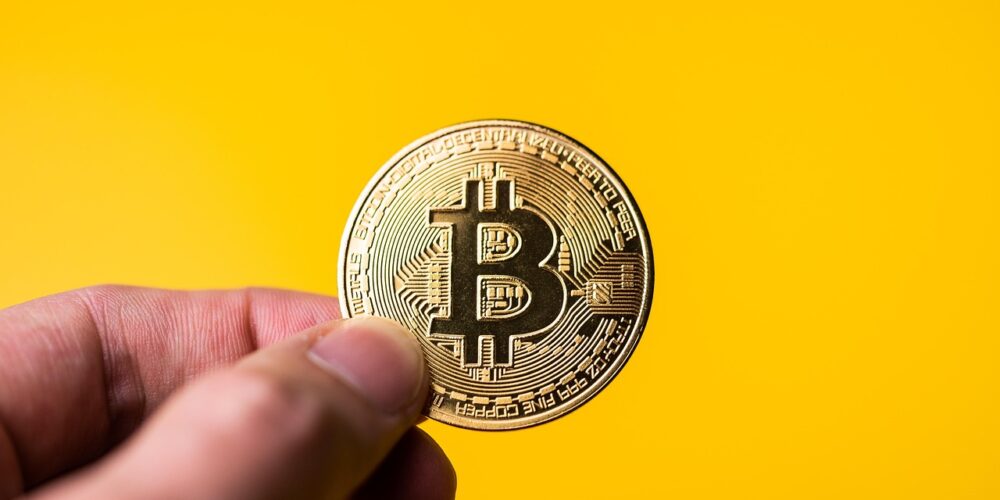Why stablecoins are Silicon Valley’s Pandora’s box

The crypto market does not only consist of the often discussed Bitcoin.
Andreas Dombret, former board member of the Deutsche Bundesbank, analyzes alongside the technologist Wessel Janse van Rensburg the possible consequences of the newly implemented Genius Act for the global financial system. Their op-ed has been originally published at Reaction Digital Media Ltd.
By Andreas Dombret and Wessel Janse van Rensburg
President Trump’s signing of the GENIUS Stablecoin Act marks a chapter in an ancient storyline—the eternal tension between progress and order. Pandora’s jar—mistranslated as a box—came with strict instructions never to open it. Stablecoins also arrive with promises and prohibitions.
The warnings are mounting about the Pandora’s box of problems that stablecoins will unleash. The economist Barry Eichengreen, one of the leading experts on the history and development of money, invokes the spectre of coins slipping their pegs to the dollar—as happened in 2022—and recalls the chaos of the free-banking era, when dozens of regulatory systems produced banknotes trading at wildly different prices. Yet this is perhaps the least urgent danger lurking inside.
It is likely that only a few stablecoins will dominate. Despite piggybacking on the dollar and often sharing the same blockchain, out of the box their smart contracts remain stubbornly non-interoperable and therefore non-fungible.
Each coin is a brand—and combined with the network effects inherent in money itself, winner-takes-all dynamics emerge. Already, two giants rule: Tether commands a $159 billion market capitalisation – 61% of the market – while Circle’s USD Coin holds $62 billion or 24%.
Say what you will about the banking system, but it resists the extreme concentration that defines Big Tech. In spite of years of consolidation, the US still has more than 4,000 banks. Europe has more. That is because, up to now, banks have made a business of a private means of payment but to an open public standard. The result is a monetary commons—a seamless blend of commercial and central bank money that, in normal times, the public can’t distinguish between.
The irony is that stablecoins depend on the very openness they seek to enclose. As Rohan Grey, a law professor at Willamette, puts it: the stablecoin trilemma makes it impossible to create coins that are simultaneously stable, denominated in a public unit of account, and free from reliance on public collateral.
This reliance on public collateral is where the real monsters escape Pandora’s jar. A Bank for International Settlements (BIS) study finds that even moderate stablecoin inflows lower three-month Treasury yields by 2-2.5 basis points within ten days. No wonder Treasury Secretary Scott Bessent welcomes this effect, hoping a flourishing dollar stablecoin market will cheapen escalating government borrowing.
But the effects cut asymmetrically: according to the BIS stablecoin outflows raise yields by 6-8 basis points—two to three times more than inflows lower them. It is easy to paint a scenario where the impact could be much greater, if for instance there was a repeat of the May 2022 crash in the stablecoin market.
There are other dangers. Short-term Treasury yields are the Fed’s key transmission channel for controlling money-market rates. Stablecoin treasuries already rival major US money-market funds as T-bill buyers. If the sector explodes ten-fold to $2 trillion by 2028—as suggested by the Treasury Borrowing Advisory Committee, the expert panel that advises on government debt issuance—it could seriously disrupt Fed monetary policy transmission. Worse, it raises the risk of fire-sales in the very market global regulators already consider dangerously brittle.
Then there is the impact of dollar stablecoins on monetary systems beyond the dollar. US Treasury Secretary Scott Bessent says this “groundbreaking technology will buttress the dollar’s status as the global reserve currency”. In league with Silicon Valley and stablecoin issuers, the US administration is offering hope to consumers trapped by weak currencies and inflation. Yet this gift comes with Pandora’s curse. Foreign users import not just dollars but the full weight of US monetary policy and regulatory whim. Widespread adoption will hollow out local monetary systems and strip central banks of their tools—spreading the very instability it promises to tame.
The irony is, of course, that in seeking to extend dollar hegemony through stablecoins, the US may unleash forces that undermine it. Unlike the offshore Eurodollar system—where correspondent banking gives the US chokepoints for sanctions and anti-money-laundering enforcement—stablecoins open new escape routes from these very controls.
Centralised stablecoins like Tether and Circle can perform KYC checks at issuance and redemption. They can freeze wallets, burn tokens, and mint new ones as replacement. Yet once issued, tokens can flow freely to self-custody wallets or vanish via other techniques, severing links to their original identity.
However, the greatest misery escaping the stablecoin jar is that stablecoins betray the essence of money itself: credit. Where bank credit swells and contracts with the economy’s pulse, a stablecoin is frozen at birth, its entire value prepaid. It cannot spin promises into purchasing power, as banks do with overdrafts, mortgages, and working-capital lines. Stablecoins remain forever rigid, unable to respond to economic need.
If households and firms park liquidity in stablecoins rather than bank deposits, banks lose a cheap funding base and must trim loan books or raise lending spreads. The money multiplier shrinks, dampening investment and GDP growth—especially in credit-intensive sectors such as construction and bank-dependent SMEs. The net effect? A more pro-cyclical real economy in which credit contracts faster and recovers more slowly.
Of course the technology that underlies stablecoins, unified ledgers, does carry a tantalising promise: running money on unified or interlocking ledgers can offer genuine advantages, eliminating the need for layers of trusted intermediaries in many transactions. This can significantly reduce the cost of international payments. Through its programmability, smart contracts could replace escrow services and collateral requirements.
Perhaps most important, tokenisation could unlock liquidity in frozen assets. Private equity or property funds, for instance, could be sliced into affordable tokens. Smart contracts could automate the securitisation chain, while tokens stream real-time data on borrower repayments directly to investors—cutting out the middlemen.
The current debate is confused by framing it as a simplistic choice between new technology and the status quo, rather than how to best apply the advantages of unified ledgers and the tokenisation they make possible to a powerful but delicate system, credit money, whose mechanics are well understood.
The tool is neutral; the risk lies in how we apply it. Exploring how to apply these advantages is where policymakers should be focusing their attention.
Programmable ledgers can streamline escrow, fractionalise real-estate, and improve market plumbing without being tied to fully reserved private money. Those functions can sit in tokenised bank deposits that expand with credit needs, alongside tokenised central-bank reserves that anchor stability.
Acting on this simple realisation will address the evils that could escape the stablecoin jar. Knowledge rarely kills but hubris about how it is deployed does.
Andreas Dombret, formerly on the Deutsche Bundesbank board and the supervisory board of the ECB, is an Adjunct Senior Research Scholar at Columbia University. Moreover, he is the Chairman of the Atlantik-Brücke Foundation and a former board member of the Atlantik-Brücke.
Wessel Janse van Rensburg, is a technologist, former lawyer and co-founder of e-commerce start-up Miista.
